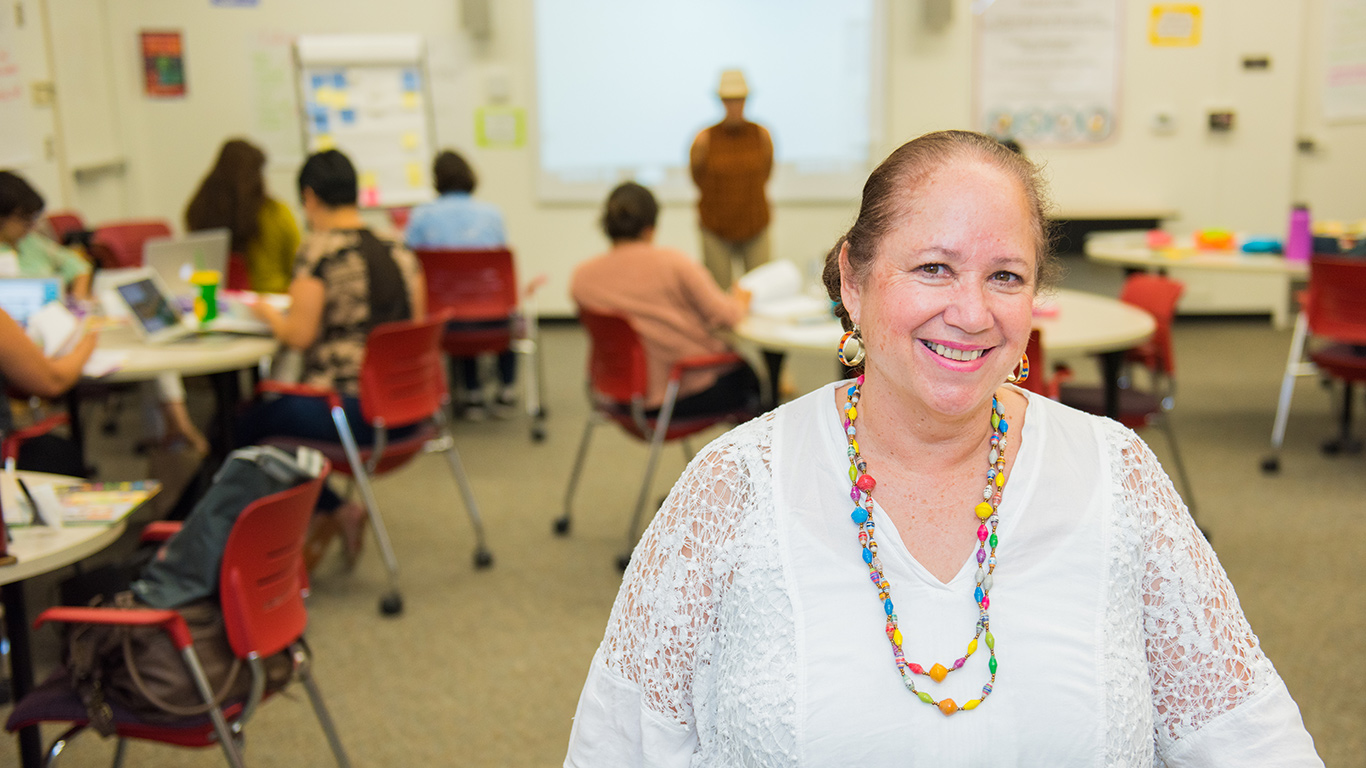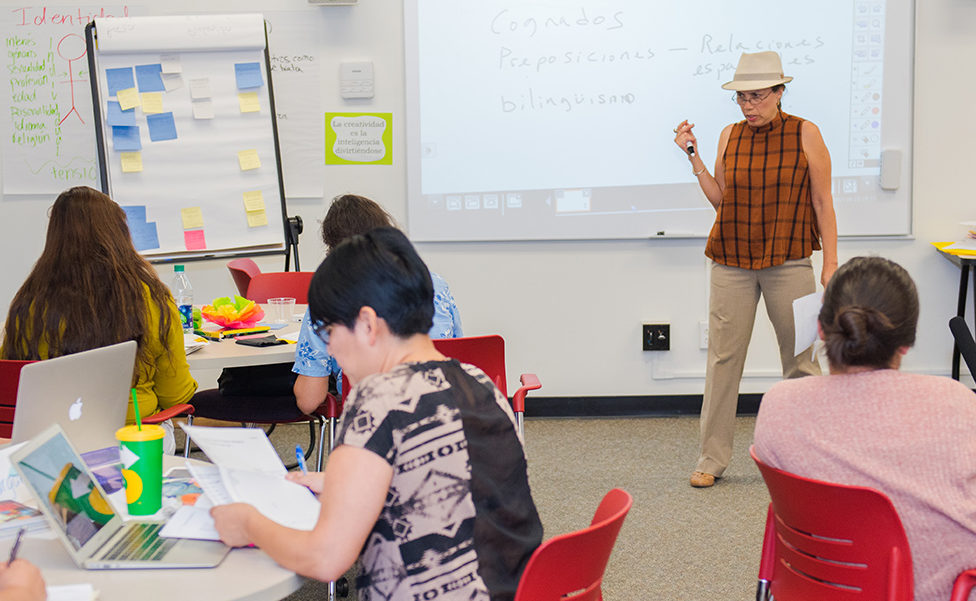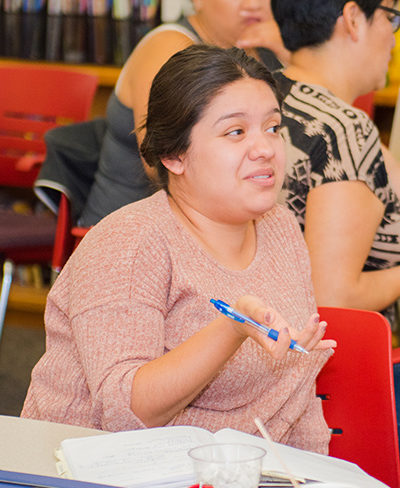
In 1996, California reduced the number of students per classroom from 30 to 20, creating thousands of teaching jobs throughout the state, only to have many disappear a decade later during the economic downturn, including progressive dual-language teaching positions.
That has changed in recent years with the state’s economic boom, and the passage of the California Non-English Languages Allowed in Public Education Act (Proposition 58) in November 2016. Today, there is a bilingual teacher shortage, and California State University, Dominguez Hills’ (CSUDH) College of Education heeded the call with the creation of its two-week, Spanish immersion Dual-Language Institute in June 2016.
“This year there will be 16 new language programs opening up in the LAUSD and it will be the first year that district begins a dual-language program in a high school,” said Lilia Sarmiento, associate professor of teacher education at CSUDH who coordinates the institute. “There is a real need for certified middle and high school teachers, and to keep the students moving forward to receive their Seal of Biliteracy, which they–and their parents–really want on their diplomas.”

The Dual-Language Institute, which is offered in the summer, wrapped up its second year in June 2017. The program was developed in collaboration with seven CSUDH faculty members from the Departments of Teacher Education, Liberal Studies, Graduate Education, Chicano Studies, and Modern Languages.
Designed to better prepare CSUDH teacher candidates and currently employed bilingual educators, the institute creates professional development opportunities in Spanish for networking, personal learning, and curricular planning by optimizing reading and writing in Spanish. It also enhances cultural identity and competence, and explores technology and the interdisciplinary methods of inquiry in the arts with the guidance of guest artists.
The overall focus of the institute is to engage students and teachers in professional learning and to recruit candidates for upcoming programs to earn their bilingual authorization certification. While dual-language teaching positions were scarce, many CSUDH students opted to not pursue the certificate, stating “I’ll take it later” after they entered the workforce, according to Sarmiento.
“They procrastinated. Now what is happening due to Proposition 58–because there are positions out there–I get calls: ‘I had you in 2007. Do you remember me? How can I get my bilingual authorization?’” said Sarmiento. “At the same time, there are others who come to the institute just to prepare to teach in a dual classroom.”

Zyanya Cazares is one of those students. Since graduating with her teaching credential and Masters in Education in 2015 from UC San Diego, and with her bilingual authorization, she has taught 6th grade at The Accelerated School, a charter school in South Central Los Angeles. However, next fall she will begin her first dual-language position, teaching 6th grade in LAUSD’s Logan Street Elementary School in Echo Park.
Though Cazares was born in the U.S. her first language is Spanish; however, she still feels “a bit nervous” about her new teaching assignment, particularly linguistics, the greatest area of improvement among participants in the institute, according to Sarmiento.
“One of the things that I learned El Pregonero was that it’s okay to not know everything,” said Cazares. “As a Chicana growing up learning Spanish, you think you know the language, but you don’t know how it is used in an academic setting. There’s a lot of cognate words that we translate in the program. I’ve learned how to say a lot of words in Spanish the right way.”
The faculty involved in the Dual-Language Institute have also designed a Master of Arts in Education with an option in Dual-Language Learning, and a Certificate in Dual-Language Learning, which may be approved soon. The Department of Liberal Studies received a $227,000 grant to develop a four-year bachelor’s of arts degree program for teacher candidates to complete their degrees while earning their teaching credential and bilingual authorization.
“These types of programs are very rewarding to be a part of. Participants walk away saying such things as ‘Why didn’t you offer this before?’ or ‘This has been so inspiring because you are teaching us to be learners again,’” said Sarmiento. “Now that’s inspiring, for us.”